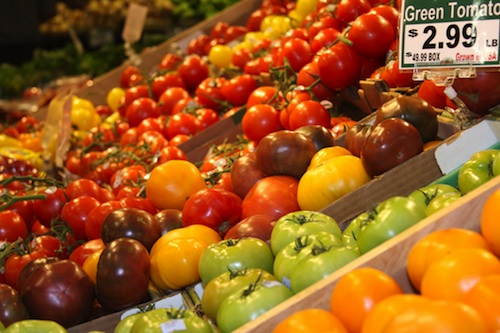There’s nothing much better than a freshly picked, homegrown tomato. When it comes to tomato varieties, the sky is the limit. There are many different shapes, colors and sizes available.
Here are some tips from University of Georgia Cooperative Extension on how to grow high-quality tomatoes in the home garden.
Tomatoes are either determinate or indeterminate. Determinate varieties grow a more compact bush and produce most of their crop at one time, in two to five pickings. Indeterminate varieties set fruit clusters along a vine stem that continue to grow all season.
Tomatoes are susceptible to many diseases, viruses and insects. Some tomato varieties have been hybridized for resistance to pests. Built-in pest resistance is usually listed on the plant label and on the back of the seed packet.
Tomatoes require a soil pH in the range of 6.2 to 6.8. The most accurate way to determine the pH of soil is by collecting it and having it tested. Your local UGA Extension office can help you send a soil sample to the UGA Soil, Plant and Water Analysis Laboratory for testing.
In the absence of a soil test, apply lime at a rate of 5 pounds per 100 square feet and till or hoe it into the soil. Dolomite lime provides calcium and magnesium, which are two important elements for plant growth and health.
At planting, apply a light amount of fertilizer with 1 pint of a starter solution — 2 tablespoons 5-10-10 or 5-10-5 fertilizer dissolved in 1 gallon of water — around each tomato plant. If plants are to be staked or trellised, space them 24 inches apart in rows that are 4 to 6 feet apart.
Tomatoes will benefit from mulch placed around the stems soon after transplanting. Not only will mulch help to conserve moisture, it will reduce weed pressure and the back pain that comes from weeding your garden.
We have all heard the saying, “all bark and no bite.” This saying is somewhat true for applying too much fertilizer to tomatoes. This can create an “all plant and no fruit” situation. Over-fertilization, a common problem in tomato plants, causes vigorous vegetative shoot growth and few blooms or fruit.
When using liquid fertilizer solution, be careful not to over-fertilize. In the absence of a soil test, incorporate 1.5 pounds of a 10-10-10 complete fertilizer (containing micronutrients) per 100 square feet prior to planting. After the first tomatoes form and are the size of a quarter, side-dress them with 1 pound of 10-10-10 fertilizer per 100 square feet of bed. Repeat every three to four weeks until the harvest has ended.
Tomatoes need about 1 to 2 inches of water per week. If rainfall does not provide what they need, water plants thoroughly once or twice a week. One or two heavy soakings is better than many light sprinklings.
For best quality, harvest tomatoes when they are fully ripened on the vine. If tomatoes are harvested before they are ripe, but after they have reached the mature green stage, they can be ripened of the vine. Place pink or mature green tomatoes in a warm, well-ventilated area. Space them out and allow them to finish ripening before adding them to a salad or sandwich.
For more information on growing tomatoes, see the UGA Extension publication “Georgia Home Grown Tomatoes” (B 1271), at extension.uga.edu/publications/ or contact your local UGA Extension office.




